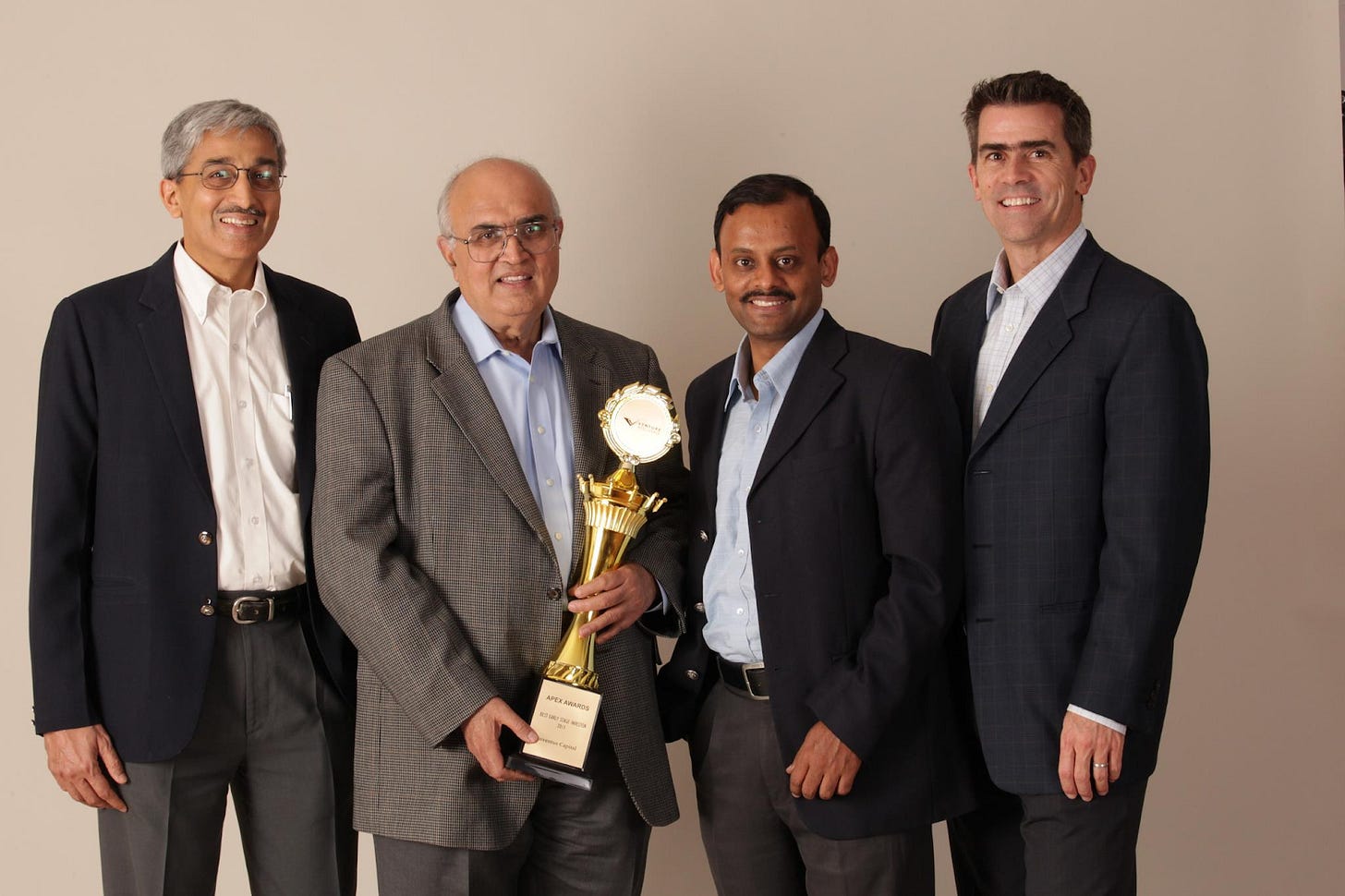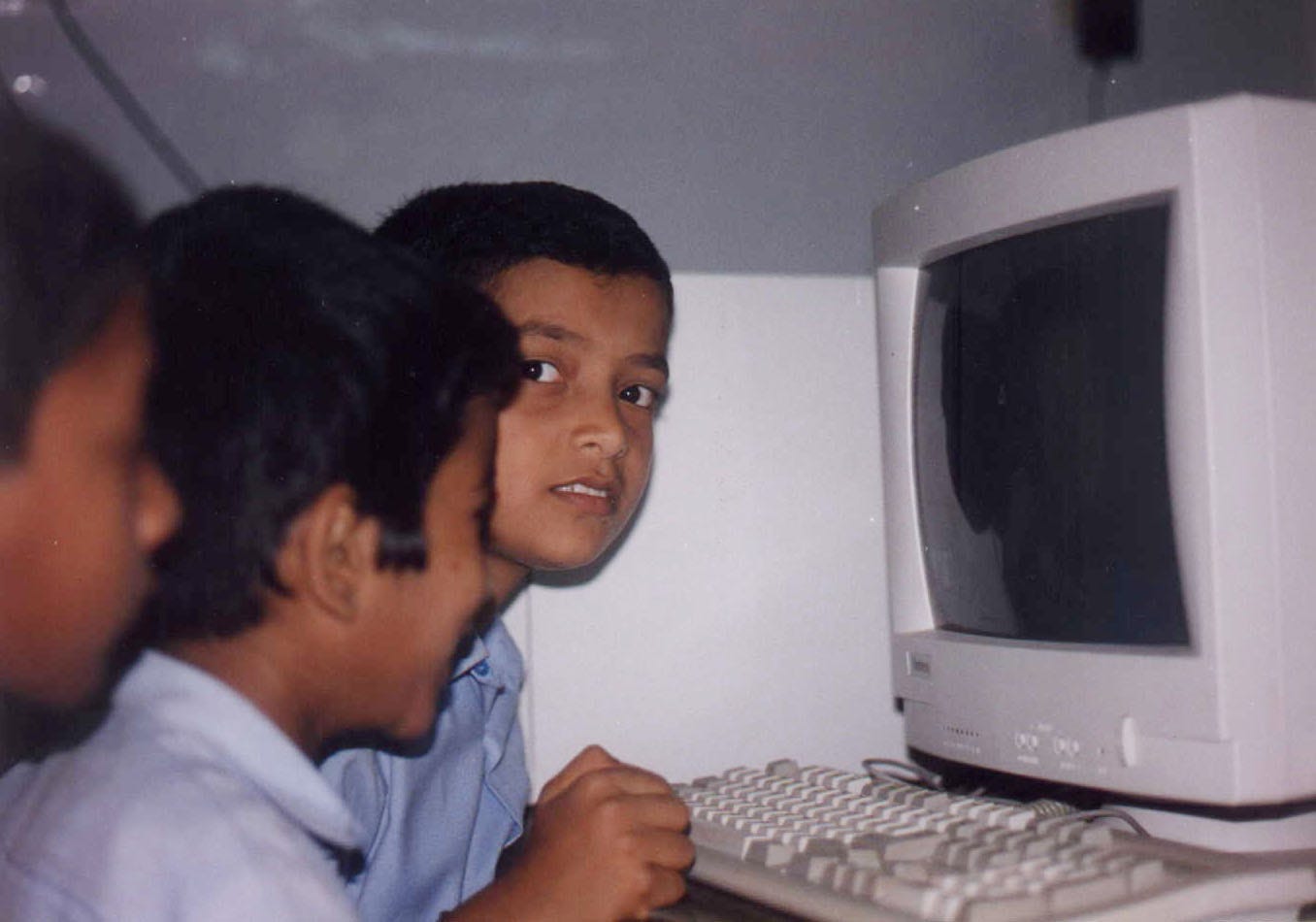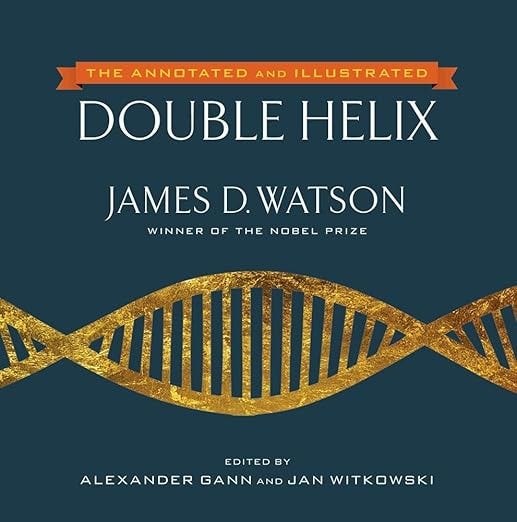September 2024 | Athera's Odyssey: Transformative Innovation
From insuring the future India moves to saving thousands of lives with cutting-edge technology in heart healthcare, let's dive into Athera's Odyssey.
In this month’s edition of Athera’s Odyssey, we cover
Portfolio Perspectives: We look at how heart healthcare in India is evolving through the inspiring story behind Tricog Health.
Ecosystem Stories: In conversation with Yashish Dahiya, Co-founder, of PB Fintech group on insuring the future of India.
Athera Almanac: Samir Kumar shares with us the origins of how he got into VC the origins of Athera Venture Partners and the lessons learned along the way.
Pathways: This month in Pathways, we’re sharing our love for classic literature through books that help us revisit timeless stories, concepts, and reflections.
Portfolio Perspectives: Tricog Health
This month, Tricog Health recently celebrated ten years of saving lives. In this edition of Odyssey, we decided to revisit the story of how a renowned doctor, an IBM research manager, and a Texas Instruments leader decided to forego the well-trodden path and team up to change heart care around the world.
From Saving Lives to Startup Founder
In the high-stakes world of cardiac care, where every second can mean the difference between life and death, Dr. Charit Bhograj found himself at a crossroads in 2009. As a successful cardiologist, he was the product of a rigorous medical system designed to save lives at critical moments. Yet, a single incident would challenge his perception of healthcare delivery and set him on an unexpected path.
On a day like any other when Dr. Charit received an urgent call about a 40-year-old patient. What started as a case of perceived acidity had escalated into a life-threatening situation. By the time the patient reached the hospital, he had no pulse and no blood pressure - a massive heart attack had brought him to the brink of death.
As Dr. Charit fought to save the patient's life, a stark realization dawned on him. The patient's journey - from dismissing symptoms, visiting a general practitioner, then a nursing home, and finally reaching a tertiary care hospital - was a common narrative in India. Unlike the West, where emergency services often lead directly to specialized care, India's healthcare system relies heavily on a network of primary care facilities and nursing homes as the first point of contact.
After this incident, Dr. Charit was driven to take action. He realized that only a few people in India had access to timely, specialized cardiac care, while millions faced the possibility of tragedy due to delayed diagnosis and treatment. This realization deeply affected him and inspired him to find a solution to bridge this crucial gap in cardiac care.
Crossing The Doctor-Entrepreneur Bridge
As the incident grappled with Dr. Charit he decided to approach major medical equipment manufacturers with his ideas.
To his dismay, he was met with skepticism and advice to stick to surgery and implanting stents.
By 2014, Dr. Charit made a decision that would change the course of his life and potentially save millions of others. He approached his wife with a proposition that seemed almost unthinkable - to put his successful cardiology career on the back burner and invest their savings, earmarked for their children's education, into starting a new venture.
This marked the birth of Tricog Health, a venture aimed at democratizing access to quality cardiac care across India and beyond.
Assembling the Dream Team
The journey from concept to reality was far from smooth. Dr. Charit embarked on a relentless pursuit to find the right technical co-founder, making cold calls and knocking on doors week after week. His persistence led him to Microsoft Research, where, although turned down, he was directed to Dr. Zainul Charbiwala.
Dr. Charbiwala, an IIT Bombay and UCLA Ph.D. graduate with expertise in medical devices, seemed the perfect fit. However, convincing him was another challenge altogether. It took Dr. Charit six months of persuasion, competing against prestigious job offers from IBM Research, Microsoft Research, and Intel Labs. The turning point came when they ran a small pilot project using an off-the-shelf ECG machine and a rudimentary cloud setup. In just one month, they diagnosed two heart attack cases, saving lives and convincing Dr. Charbiwala of the immense potential of their venture.
The founding team expanded further with the addition of Udayan Dasgupta, an AI expert from IIT Bombay and Texas A&M, who was persuaded to leave his work on autonomous vehicles to tackle the more pressing issue of cardiac care. Abhinav Gujjar, a cloud computing specialist from Microsoft and Thomson Reuters, completed the quartet, bringing crucial expertise in building enterprise-grade cloud software.
This diverse team, each giving up lucrative careers and personal ambitions, came together with a singular focus - to use technology to save lives.
Cold Starting The Virtuous Cycle of Data and AI
Tricog's approach to solving the cardiac care crisis was innovative and pragmatic. They recognized that to build an effective AI system, they needed vast amounts of high-quality medical data - a resource not readily available. Their solution? Create a service that would generate this data as a byproduct.
They started by offering rapid ECG interpretation services, with AI assisting human cardiologists. This approach solved the immediate need for quick, accurate diagnoses while simultaneously generating a wealth of data to train and improve their AI algorithms.
The results were staggering. From an initial diagnosis time of 10 minutes, Tricog has progressively reduced it to just 30-40 seconds. This improvement was a life-saving advancement in a field where every minute counts.
This virtuous cycle - providing services, generating data, improving algorithms, and enhancing services - became the engine of Tricog's growth and impact.
Overcoming Adoption Challenges
Introducing a revolutionary technology into the conservative world of healthcare was no small feat. The team spent six months rigorously training their initial group of doctors and standardizing their entire medical process before going live in February 2015.
Dr. Charit personally spearheaded the early sales efforts, recognizing that in medicine, trust and relationships are paramount. He would wait in clinics, demonstrating the technology on actual patients, providing reports before they even finished dressing after their ECG.
The team had to overcome not just technological skepticism but also concerns about data privacy and the fear of losing patients to larger hospitals. They had to prove that their sole focus was on providing rapid, accurate diagnoses to improve patient care.
It took six months of relentless effort before they received their first inbound inquiry - a moment that marked the beginning of broader acceptance.
Scaling Across India and Beyond
As Tricog began to scale, they encountered surprising revelations about the market. Initially believing their solution was primarily for rural India, they discovered an equally pressing need in urban centers. The reality was that across India, only a small percentage of people directly access tertiary care facilities, making their solution vital in both rural and urban settings.
Their expansion journey led them to discover unique use cases. Diagnostic centers, for instance, found Tricog's service invaluable for providing timely reports for health check-ups. Large hospitals saw it as a patient discovery platform, helping them identify and treat critical cases quickly.
By 2018, Tricog had made significant inroads in the private sector. Their next frontier was the government healthcare system, starting with a successful implementation in Goa that reduced heart attack mortality from 15% to 7%. This success led to national recognition and implementation in other states.
Internationally, Tricog found fertile ground in Southeast Asia and Africa, regions facing healthcare challenges similar to those faced by India. They replicated their diagnostic center model in the Philippines and implemented hub-and-spoke models in Malaysia and Kenya. In some cities, Tricog's ECG service became the most advanced medical test available, underscoring the immense need in these markets.
The AI-Human Synergy in Healthcare
At the core of Tricog's success is their balanced approach to AI in healthcare. Their system doesn't replace human expertise; it augments it. Every AI-generated diagnosis is verified by a human cardiologist, ensuring accuracy while dramatically improving speed and reach.
This synergy has led to remarkable outcomes. Tricog has expanded the capacity of existing healthcare systems, allowing a single cardiologist to oversee a much larger patient base. The rapid diagnosis time - from 10 minutes to 30-40 seconds - has been crucial in emergencies, potentially saving countless lives.
In just a decade, Tricog has served over 20 million patients, a number that took 8 years to reach 10 million but only 23 months to double. Today, Tricog's system is used in nearly 10,000 centers across India, diagnosing about 3% of all cardiac cases in the country.

Reimagining Healthcare Delivery
Looking to the future, Dr. Charit envisions a healthcare landscape where up to 70% of care is delivered at home. This vision is driving Tricog's next phase of innovation - developing home-based cardiac monitoring solutions.
The company aims to reach 100 million people, potentially averting millions of cardiac deaths. Their goal is not just to expand their business but to fundamentally transform how cardiac care is delivered, making it more accessible, efficient, and effective.
As Tricog continues to innovate and expand, they're not just building a successful business - they're rewriting the rules of healthcare delivery, one heartbeat at a time. Their journey from a moment of realization in a Bangalore hospital to a global health tech innovator serves as a powerful reminder of the impact that can be achieved when passion, expertise, and technology converge to solve critical human problems.
Ecosystem Stories with Yashish Dahiya
From the bustling corridors of a London investment bank to the helm of India's largest insurance aggregator, Yashish Dahiya's journey is a testament to the power of vision, resilience, and a deep understanding of the Indian middle class. As the co-founder and CEO of PolicyBazaar, Yashish has not just built a successful company but has fundamentally altered the insurance landscape in India.
Athera had the privilege of sitting down with Yashish to explore the intricacies of building a customer-centric insurance platform, the challenges of educating a nation about financial security, and his vision for the future of social security in India. What unfolded was a conversation that painted a vivid picture of India's evolving relationship with insurance and the role of technology in shaping it.
PolicyBazaar: A Mission Born of Necessity
Athera: Yashish, you've been on this journey of insuring India since 2008. What inspired you to start PolicyBazaar, and how has your mission evolved over the years?
Yashish: I never actually set out to start a company. If you had asked me back in 2008 if I was going to give up my career in investment banking to start an insurance aggregator in India, I would have laughed you out of the room.
It was impossible in my mind. Why would anybody ever do that?
The truth is, that PolicyBazaar was born out of necessity. I had been laid off from my job in London during the financial crisis, and I was having conversations about joining other companies. Even on the day we were receiving our first investment, I was in talks with a company about joining as managing director. It just so happened that the offer came a few days after our investment was finalized.
However, beyond fate, what drove me was a deep-seated understanding of the Indian middle class.
I come from a village very close to Delhi, so I understand village life intimately. The village is self-sufficient; they don't really care about what's happening outside. But then there's this other India - the middle class, which today is broadly defined as anyone earning between 5 lakhs to 50 lakhs annually.
These are people who have moved out of villages in the last one or two generations. Their biggest fear is going back to the village because for them, that represents failure. It's very similar to how Indians who moved to America in the past feared having to return to India if they lost their jobs.

This middle class needs both a Plan A and a Plan B.
Plan A is aspirational - my kids must do better than me, life is going to be great, India is growing.
Plan B is about protection - what happens if I lose my job? What if I fall ill? What about my children's education or my retirement?
I realized that there was a serious gap in how India was thinking about Plan B. That's what PolicyBazaar set out to address - to start a serious conversation about protection and financial security for the Indian middle class.
Athera: So you've essentially been on a mission to change the mindset of an entire nation when it comes to insurance. How has that journey been?
Yashish: It's been challenging, but incredibly rewarding. When we started in 2008, if you asked people what insurance meant to them, they would have said car insurance and LIC. Today, if you ask any person which two policies they would buy for their family, unanimously you'll get the answer: health insurance and term insurance.
They may not buy it immediately, but it's top of mind. And I think that change, nobody can claim credit for that except PolicyBazaar. We've fundamentally altered how Indians think about financial protection.
But it's not just about selling policies. We're trying to solve for social security. In India, the market potential for social security for the middle class is about 500 to 600 billion dollars. That's not 10 years from now - that's today. It's a massive opportunity, but more importantly, it's a critical need for our country.
The AI Revolution in Insurance
Athera: You've been at the forefront of using technology to transform insurance. How do you see AI changing the game?
Yashish: We have a massive amount of data on claims, customer behavior, how people in different states react, and different economic segments - more data than we can handle. 16 years worth of conversations, clickstream data, and other sources.
This has enabled us to use AI in several ways.
Risk assessment: Many life insurance companies and financial institutions have started using our risk assessment models.
Product creation: Because we hear what customers want, we can work a lot on creating products that truly meet their needs.
Customer interactions: If you visit PolicyBazaar and speak to three different agents, the transition will be seamless. Previously, an agent would need to spend about 10 minutes taking notes after a call to ensure that the next person understood the conversation. Now, all of this is automated.
Quality checks: Previously, we used to manually review all car insurance claims. However, we have now automated the process. For car claims amounting to 1 lakh rupees or less, we settle most claims upfront through video inspections. The AI assesses the damages and provides real-time pricing.

But here's the thing - technology doesn't have power on its own. It gets democratized very quickly. The power lies either with the customer or with the government. That's why we've always focused on building our own tech stack rather than relying on third-party tools. It gives us the flexibility we need and keeps our variable margins in check.
The Human Touch in a Digital World
Athera: With all this technology, how do you maintain the human element, especially when dealing with something as personal as insurance?
Yashish: That's a great question, and it gets to the heart of what we do. You see, educating people about insurance isn't enough. If I tell you to buy health insurance or life insurance, you probably won't do it right away. It's good to know, but it's not urgent.
What happens is this: one day, someone close to you - a friend, a colleague, a family member - will fall ill or face an untimely death. It's a statistical reality.
When that happens, you suddenly realize, "Oh my God, look at the difficulty these people are in. Statistically, there wasn't much difference between me and them."
At any given point, about half a percent of India's population is in this state of realization. That's when they come to PolicyBazaar because we've built that association in their minds through our persistent messaging.
Now, here's where the human touch becomes crucial. When that person comes to us, in that moment of realization and vulnerability, I personally want to be right there in front of them. I want to say, "Hey, you've come to the right place. These are the plans. What do you want to know? Let’s insure your future and your family’s future starting today."

Let me break it down: About 30% of people who come to us in this state are going to buy health or term insurance in the next 45 days. Our goal is to increase that to 40% and capture all of it. Currently, we're getting about half of that 30%.
The best-case scenario is if I could personally be there to guide them through the process. Since that's not feasible, we aim for the next best thing - a video call or at least a phone conversation. The worst case for us is if the customer just buys online without any interaction.
Here's why this matters: If we let customers buy without interaction, we might only convert 3% of that initial 30%. But with our high-touch approach, we can stretch that to 15%. This difference accounts for about 80% of our sales.
This approach is why we sometimes get criticized for being pushy. But we explain to our employees that they are like angels or ‘farishtas’. They're doing good, even if it sometimes feels like they're being persistent. Because in reality, they're helping people secure their future at a critical moment of decision.
The Future of Insurance and Social Security in India
Athera: Looking ahead, what do you see as the biggest challenges and opportunities for insurance in India?
Yashish: The potential market for social security for the middle class in India is about 500 to 600 billion dollars.
But here's the catch: the middle and upper class in India is currently only about 20-30% of the population. For the government to have the financial capability to take care of the middle class, that number needs to grow to about 70% of the population. That is, in my opinion, the cutoff point.
Right now, we're in a situation where the middle class often feels like they pay taxes but get nothing back. That's because there are too few of us relative to the total population. It's a global feature - whoever has four times the national average as their income will never get anything back for their taxes anywhere in the world.
So our challenge is to continue serving and protecting this growing middle class while they become a larger portion of the population. This transition will take 15-20 years, in my estimation.
I see huge potential in healthcare. We're expanding into hospital networks on the health insurance side and reinsurance broking on the life insurance side to secure the product at every level.
We aim to lower hospital premiums, reduce customer claim rejections, and improve the overall insurance experience to increase market size by 3 to 10 times its size today and ensure financial security for more Indians.
One wish and one book everyone should read
Athera: That's a powerful vision. Any final wishes you have to make that future attainable?
Yashish: I don't have any wishes or expectations. I'm not making that up. I think I would call it naughtiness and noise. It's always there, and we've just grown to live with it.
The reality is that it's very difficult for the middle class to grow solely based on its capabilities and opportunities for its children through education and other means.
India's strength lies in entrepreneurship. People can make things happen. We are an aspirational country. When I talk to kids in India, everyone wants to do better than their parents. In contrast, when I talk to kids in the West, they are worried about matching their parents' lifestyle.
India is a very aspirational country, and it will grow. At least 30-40% of people below the middle class aspire to and will move into the middle class in the next 20-30 years. It's one of the last opportunities, as China's middle class has already emerged.
The only question is whether it will happen in 15 years or 30 years. I hope it happens in 15 years because I don't want to be working on this issue after I'm 67. If it takes 30 years, I'll still be here and that's not a problem.
Athera: Before we wrap up, is there a book you'd recommend to anyone?
Yashish: There's a book I recently came across called "Outlive" that aligns closely with what I believe in. It discusses how we typically lose about 50% of our vitality by age 50.
The concept is that at the age of 50, you should aim to have 95% vitality, not just 50%. Even in the final year of life, you should strive to maintain over 75% vitality. While we all face mortality, the period of decline leading to death should be brief, rather than 10-15 years of deterioration.
This is important because the healthcare industry profits the most from providing care during these years of declining health. We need to fundamentally change our approach to healthcare, to reduce end-of-life healthcare costs to one-tenth of their current levels. This is a challenging objective because the healthcare industry is not motivated to shrink its market. However, I believe it is essential for our future.
As our conversation with Yashish Dahiya came to an end, one thing became crystal clear: PolicyBazaar is not just a business; it's a mission to secure India's future. In Yashish's vision, every policy sold is a step towards a more resilient middle class, and every customer interaction is an opportunity to educate and empower. As India stands on the cusp of transformative growth, PolicyBazaar's journey reflects the nation's own ambition, resilience, and deep commitment to progress. In the end, it's not just about insurance; it's about instilling a sense of security that allows millions to dream bigger and reach higher. And in that pursuit, Yashish and PolicyBazaar are just getting started.
Athera Almanac: Journey of a GP
15 Years In Tech And Two Valuable Lessons
The idea of investing in startups wasn't even a concept when I joined IIT-Bombay in 1979. In those days, your career options were clear-cut: you either became an engineer, a doctor, or a chartered accountant, or you were considered useless.
I chose engineering but realized it wasn't for me, so I switched to management and attended IIM Bangalore. After my MBA, I joined the fledgling tech industry in sales and marketing roles.
After a two-year stint at Computer Point (a ‘startup’ in today’s parlance), I ended up at Wipro, where I spent over a decade, eventually leading the PC business's marketing and product management. It was at Wipro that I got my first taste of technology innovation. We launched laptops and home computers for the first time in India and forged partnerships with global players like Acer.
After a decade of helping build the PC business for Wipro in India, I joined Planetasia, another startup, just as the dot-com boom was taking hold.
Even India wasn’t immune to the hype. At one time, the entire 10km route from Mahim Junction to the airport in Mumbai was plastered with dot-com hoardings. Pet.com, grocery.com, you name it.
Boardrooms were not insulated from this craziness either and as CMO, I experienced firsthand how this caused a disconnect between investors' expectations and business realities.
In board meetings, I was consistently questioned about not spending enough on dot-com-style marketing. However, being a B2B company, I knew that flashy marketing was not necessary for reaching our customers, and resisted throwing away marketing money. When the dot-com bubble burst, though, the board members had the grace to thank me for not overspending, and the company survived. This experience taught me the importance of not advising on things you don't understand, a principle I've carried into my venture capital career.
Another instructive experience from my Planetasia stint was during my monthly visits to Hong Kong to manage sales. I sought help from our HK-based investors to expand our relationship with a key customer there. While their enthusiasm was encouraging, nothing materialized even after months. I learned another important lesson then - about not over-committing to your entrepreneurs. Add the value you can, but don't over-promise.
These lessons - about respecting entrepreneurs' expertise, not giving advice in areas you don't understand, and not overpromising - would shape my approach as a VC when I decided to move on from Planetasia.
From PC to VC
Soon after I had left Wipro, the Wipro-Acer JV which I was a part of dissolved, and the Acer folks who had been associated with that JV started an early-stage technology VC fund - Acer Technology Ventures - in 1999. Since I had joined Planetasia just a few months before this fund was launched, I declined their kind offer to join them but promised that if I ever decided to leave Planetasia, I would talk with them first. True to that commitment, a few years later, I spoke with them.
I was hesitant, to say the least, about joining the VC world, but that interview with William Liu, ex-Chairman of Acer Computer International, and then Chairman of Acer Technology Ventures, is what led me down the path to becoming a VC today. When I expressed apprehension, he simply said, "Samir, if we can move from PC to VC, you can move from PC to VC."
That sealed the deal. I joined Acer Tech Ventures and began my VC journey. However, there was one problem, I did not know anything about VC. Back then there were no podcasts, Twitter (or X if you prefer) threads, or online resources to learn from.
So I did what any beginner would do - I reached out to everyone I knew in the industry. I relied heavily on the time and generosity of people like Parag Dhol, Kanwal Rekhi, Saurabh Srivastava, Sanjay Anandaram, and many others, soaking up their wisdom. These relationships, built on genuine curiosity and respect, would prove invaluable in the years to come.
Athera’s Origins
As the dot-com era wound down, many firms reassessed their strategies. Acer Tech Ventures was among them. Despite successful investments in India, Acer decided to refocus its efforts primarily on China and Taiwan. This strategic reorientation meant winding down their operations in India, Singapore, and the USA. While it marked the end of Acer's venture activities in India, it also set the stage for new opportunities in the evolving Indian VC landscape.

During this time, Kanwal Rekhi and John (my co-founders at Inventus Capital) were exploring the idea of setting up a cross-border US-India VC fund. We met during their several visits to India in 2005, and eventually, I teamed up with them.
The journey to establish Inventus (now Athera Venture Partners) was far from smooth. We began ideating in January 2006 and started the fundraising process soon after. We were unable to secure any significant commitments for the entire year. In June 2007, we were close to giving up on the fund. We decided to give ourselves six more months. Thankfully, just before the deadline, we made progress with AT&T’s Pension Fund, receiving a significant commitment, that allowed us to close the fund in November 2007. My partner, Parag, who I had met in my early VC days, joined us soon after.
In 2006, I was part of the team running an Entrepreneur Acceleration Program (EAP) at Tie Bangalore. Phanindra Sama, redBus's co-founder, then at Texas Instruments, pitched and was selected as an EAP entrepreneur. As we were still raising our first fund at Inventus, we couldn't invest. However, in a conversation with Bharati Jacob at Seed Fund, I mentioned Phani as someone worth taking a serious look at. They went ahead and did the seed investment in redBus. When redBus was raising their next round, Phani naturally approached us.
This opportunity came because of the relationships we had nurtured over time. It's a testament to how relationships, even when they don't immediately lead to opportunities, can open doors in the future. It's not just about the immediate transaction, but about creating a network of trust and mutual support.
Sticking To Our Knitting
At Athera, we've always believed in sticking to our knitting. Our focus has consistently been on early-stage tech investments, which has served us well with successes like redBus and other profitable exits. However, the evolving investment landscape occasionally prompted us to explore new territories.
In 2013-14, when investments in physical retail were beginning to happen, we briefly considered venturing into this space. After a brief exploration, however, we realized that there was so much that we didn’t know and that it required a whole new set of skills and knowledge than what we possessed. We swiftly dropped that idea.
Disciplined investing and sticking to what we know best, has since been a cornerstone of what’s driven us over the years.
The Road Ahead
Throughout our journey, we've held firm to certain core values. Respect for entrepreneurs isn't just a cliche for us - it's demonstrated by ensuring punctuality in meetings and by responding back to them in a timely manner, treating them with courtesy, and acknowledging their knowledge and the risk they have taken.
We practice what we preach. We ask founders to be frugal, and we follow the same principle. It's about walking the talk and building trust with our entrepreneurs.
As I look to the future, I'm filled with optimism about the Indian startup ecosystem. We're seeing a new generation of entrepreneurs tackling complex problems with innovative solutions. At Athera, we're committed to nurturing not just the next generation of entrepreneurs, but also the next generation of VCs within our firm. Athera's journey is far from over.
We've built a strong foundation with a talented team. We're committed to creating a lasting institution that will continue to support and nurture India's startup ecosystem for decades to come.
In my VC journey, I’ve been greatly influenced by the poem “If” by Rudyard Kipling. A few lines which I really adore:
“If you can meet with Triumph and Disaster
And treat those two impostors just the same; …”
“If you can talk with crowds and keep your virtue,
Or walk with Kings—nor lose the common touch,...”
"If you can fill the unforgiving minute
With sixty seconds' worth of distance run..."
This is what we strive for every day at Athera – to make every moment count, to add value with every interaction, and to help build companies that will shape India's future. The journey continues.
Pathways
With the festive season around the corner, and with it the hunt for lasting gifts for our loved ones, let us take a moment and think about the gift of good old literature! Whether you're shopping for an avid reader or someone new to the joy of reading, a thoughtfully chosen book can be a cherished present. We've curated a selection of collectibles that offer something special for everyone. These books not only provide captivating stories and insights but also make beautiful keepsakes and can be read without much initiation into the context in which they were written. Happy gifting, and may these stories enrich the lives of those you cherish!
Fiction
The Illustrated Silmarillion by J.R.R. Tolkien is a stunning edition with beautiful illustrations that bring Middle-earth to life. This collectible is perfect for fans of epic fantasy. If you’ve not read Lord of the Rings, no matter - this is, in any case, the lliterary prequel; and a fantasy work of unparalleled depth for all ages.
Children’s Books Popular with Adults
The Little Prince by Antoine deSaint-Exupéry, in its exquisite illustrated edition, offers timeless wisdom and charm, making it a beloved gift for readers of all ages. Adults, in particular, seem to enjoy it all the more (as has the writer of this article, on multiple occasions). Applying a child’s lens to the world, it seems, is a profound experience.
Science
Annotated and Illustrated Double Helix by James D. Watson features detailed annotations and captivating illustrations, offering a unique insight into the discovery of DNA’s structure.
Sports/Biography
Courage to Soar by Simone Biles captures the inspiring journey of the world-renowned gymnast. Simone has achieved remarkable success and the halo of a generational talent at the very top echelons of her sport, but at the same time, stood for causes even larger, though her own example. This special edition is a perfect gift for sports enthusiasts and dreamers.
Graphic Novels
Maus by Art Spiegelman, a Pulitzer Prize-winning graphic novel, presents a powerful narrative of the Holocaust through striking illustrations, making it an essential addition to any collection. A reminder we always add — graphic novels (unlike comics) are highly nuanced works of remarkable depth in their content, narrative and characterisation; you’re missing something if you haven’t tried one yet. Start with Maus!
Philosophy
Since we’re talking of gifting, Meditations by Marcus Aurelius, in a beautifully bound edition, provides profound reflections on life and leadership, perfect for those looking to steer through challenging periods in their life. All that, without being too hefty or dense.
Culture
Finally, an oddly fun one — A History of the World in 6 Glasses by Tom Standage explores the impact of beverages on history. Tom covers six beverages — beer, wine, spirits, coffee, tea, and cols — and tracks how intricately they’re woven with human civilization.






















